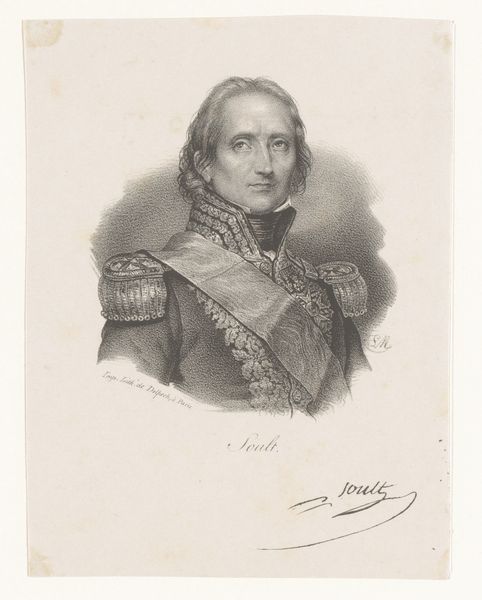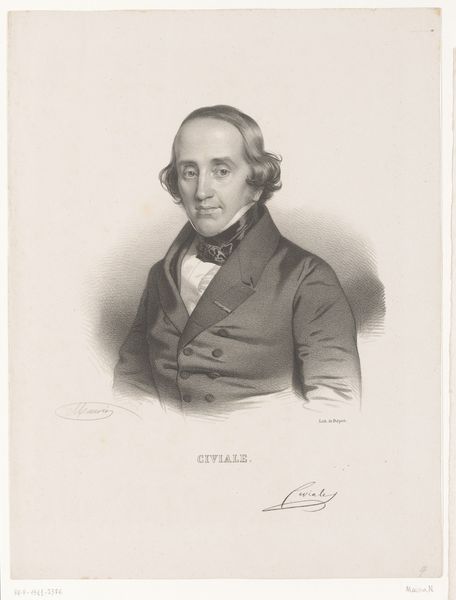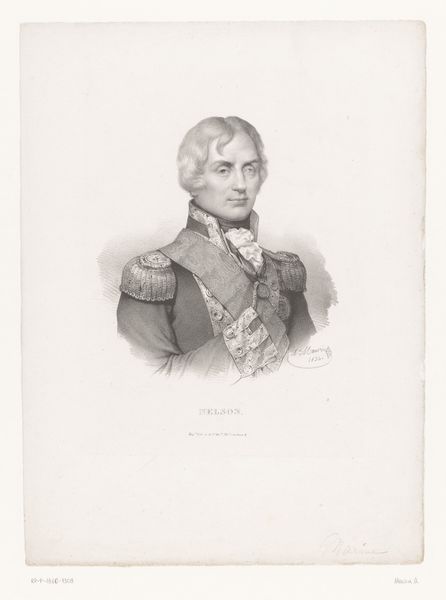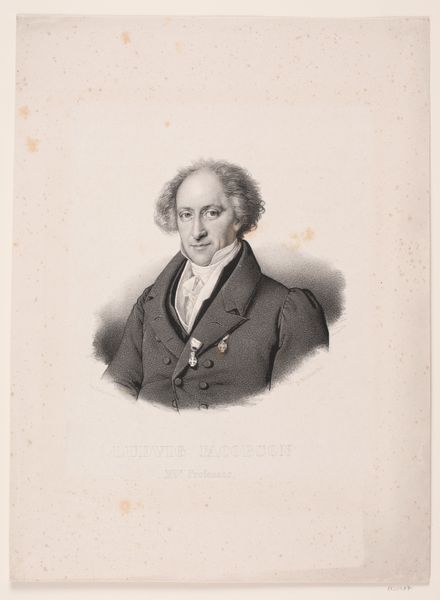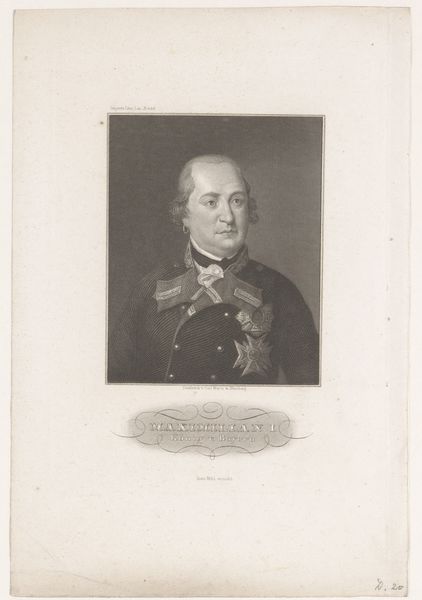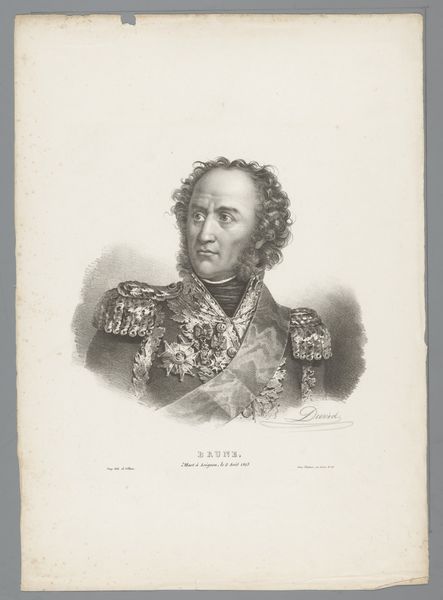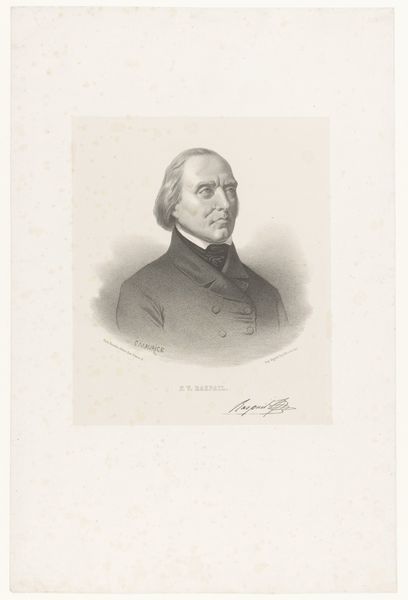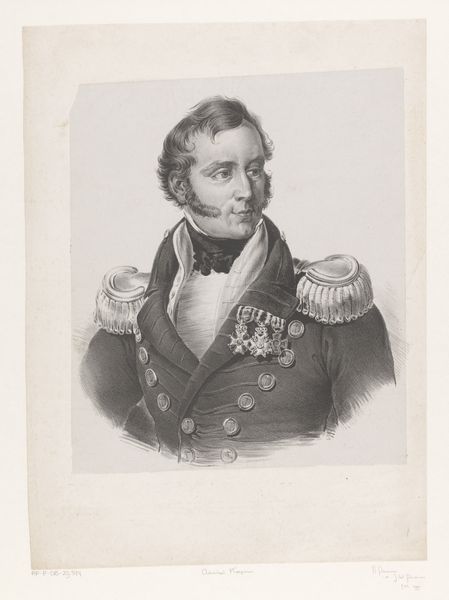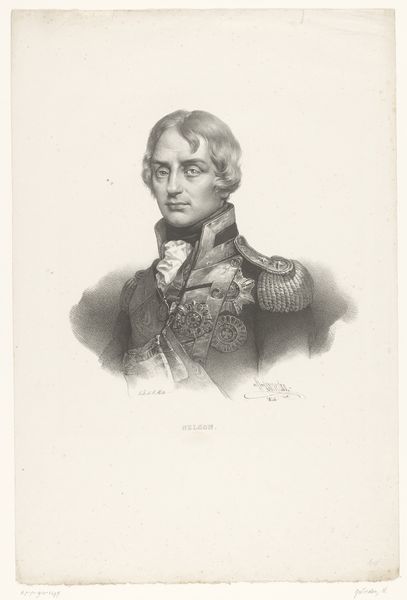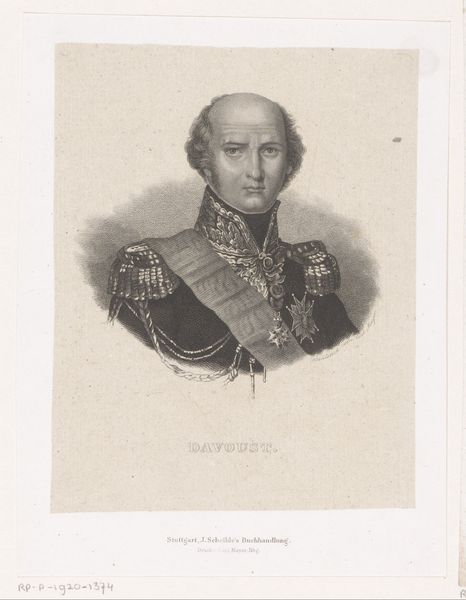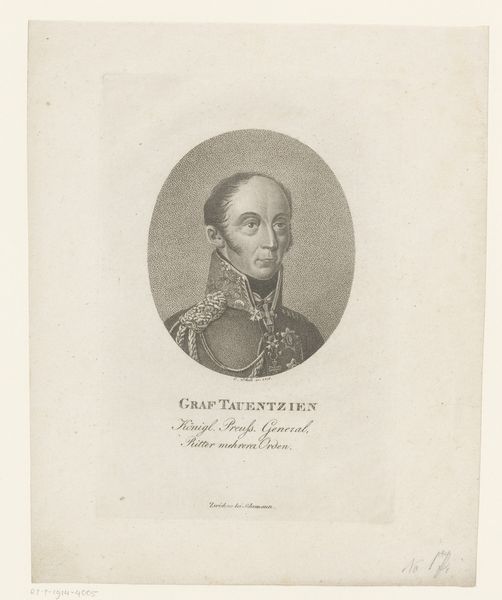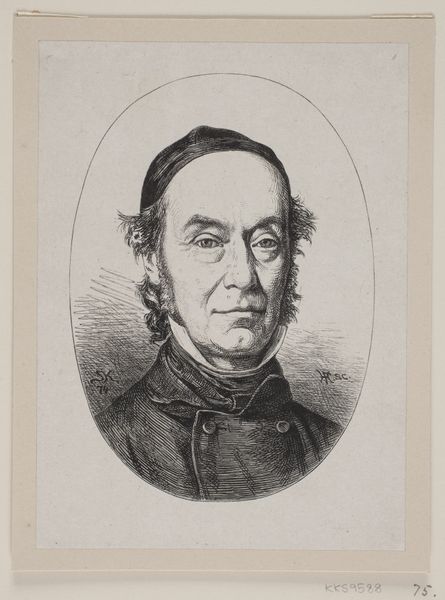
drawing, pencil
#
portrait
#
drawing
#
historical photography
#
portrait reference
#
romanticism
#
pencil
#
portrait drawing
#
history-painting
#
academic-art
Dimensions: height 429 mm, width 311 mm
Copyright: Rijks Museum: Open Domain
This portrait of Nicolas Jean-de-Dieu Soult, was made by Nicolas Maurin in the first half of the 19th century, using the technique of lithography. Lithography is a printing process that relies on the properties of oil and water to reproduce an image. A design is drawn on a flat stone or metal plate with a greasy crayon, then treated with chemicals so that only the drawn areas attract ink. The printmaker then transfers the inked image onto paper. Lithography, invented at the end of the 18th century, allowed for multiples of an image to be produced more efficiently. This print is a good example of how technical innovation in the crafts allowed for the mass distribution of images. This had a great impact on political life, commerce, and the circulation of knowledge. So, in considering this portrait, think not only about the person depicted, but also about the skilled labor and the technological innovation that made its mass production possible. It's a reminder that even seemingly straightforward images carry a complex story of materials, making, and social context.
Comments
No comments
Be the first to comment and join the conversation on the ultimate creative platform.
